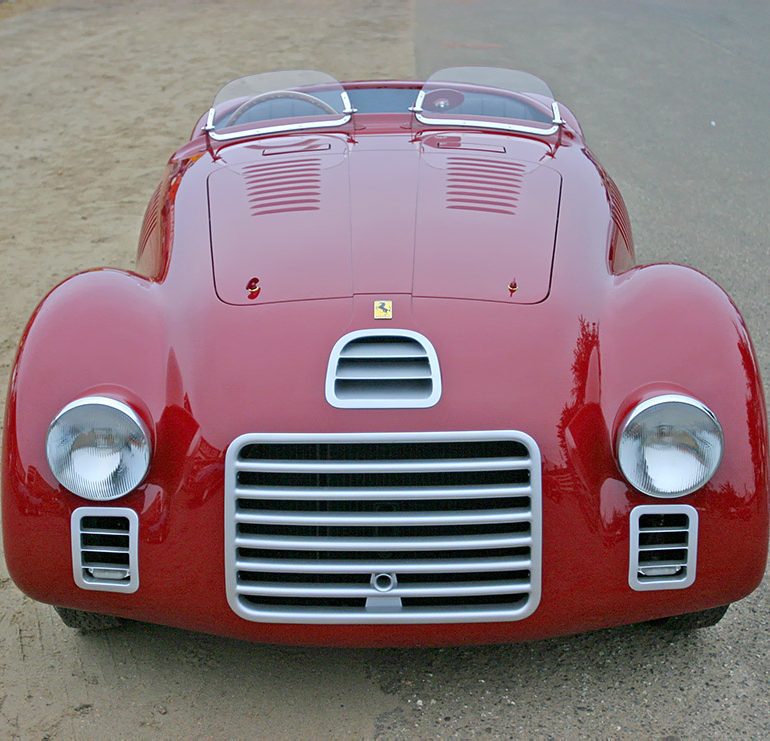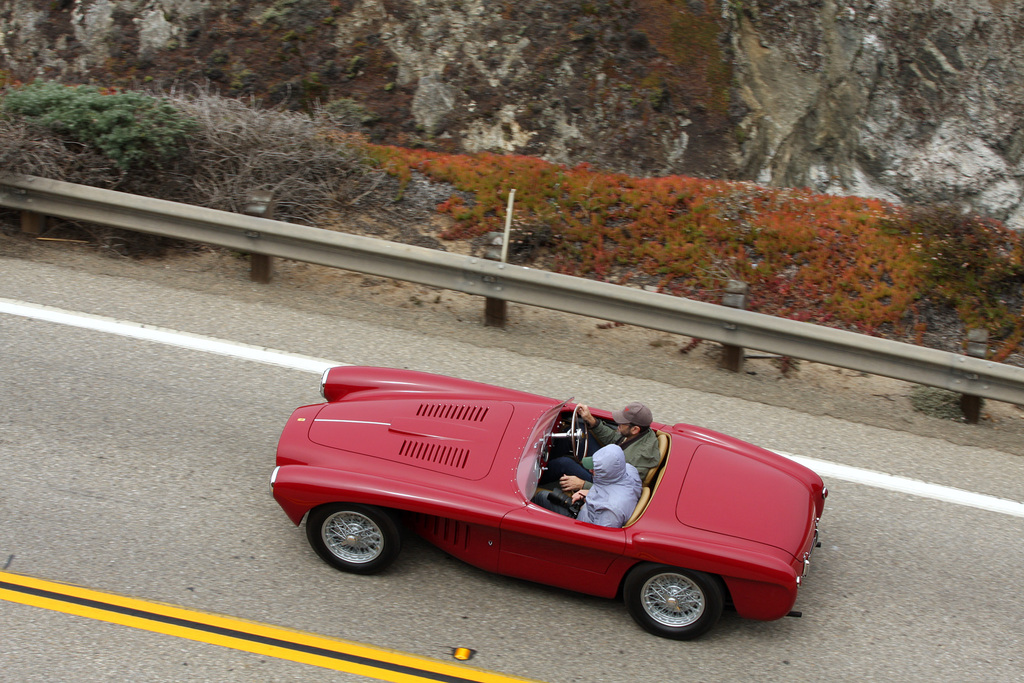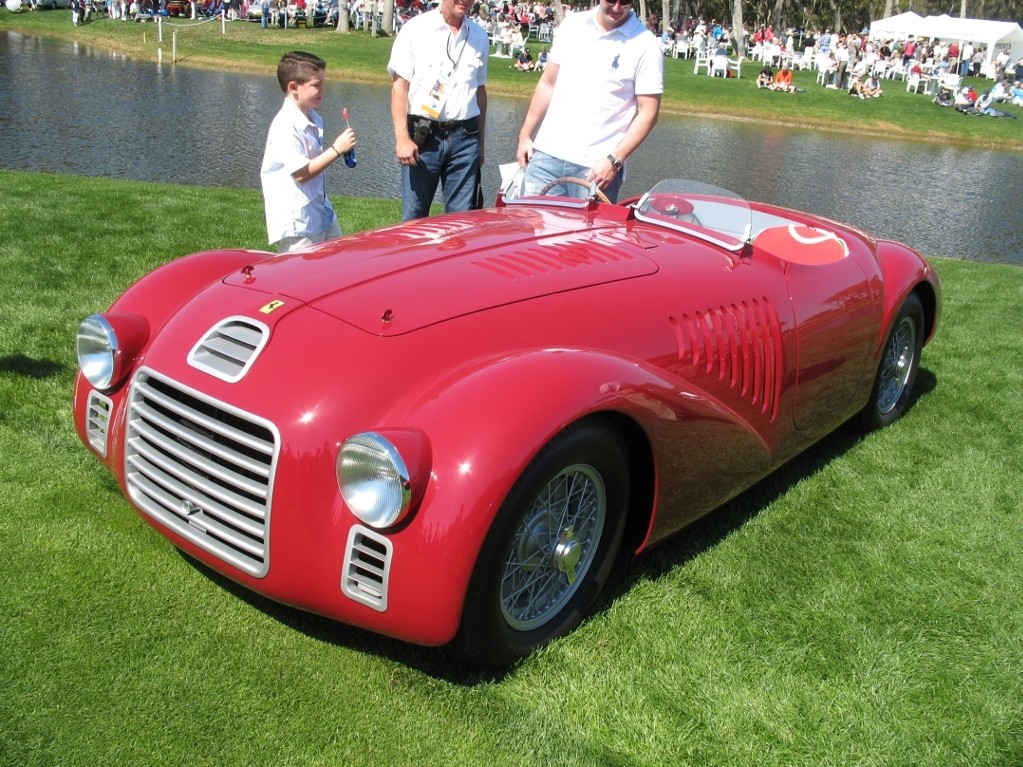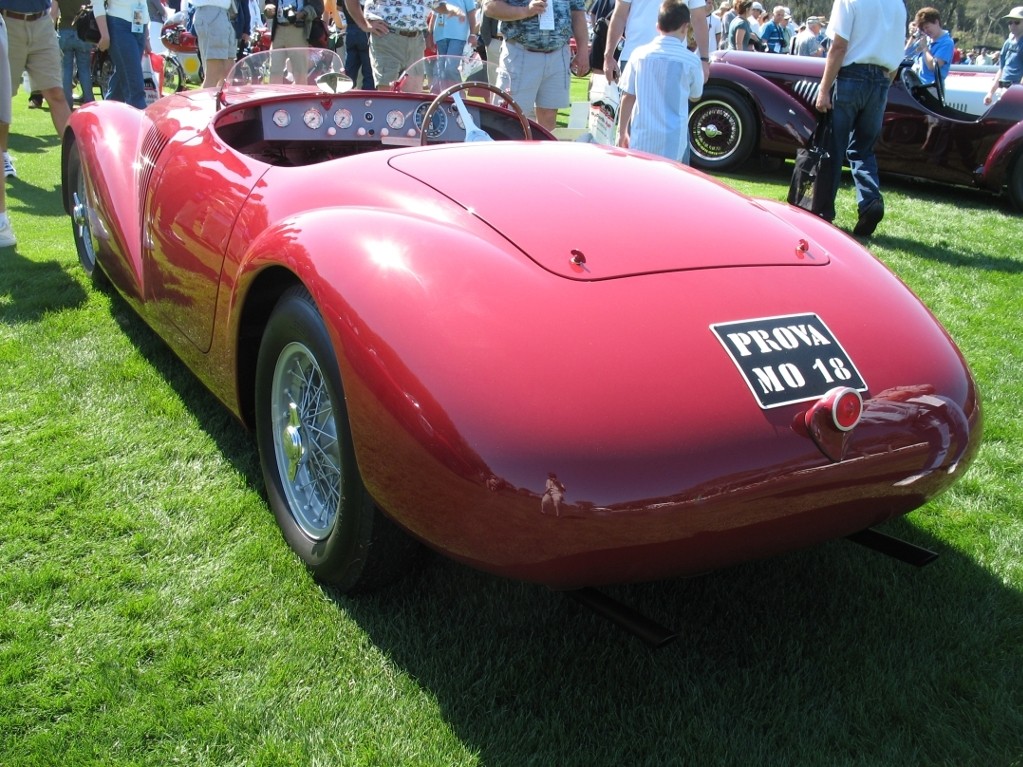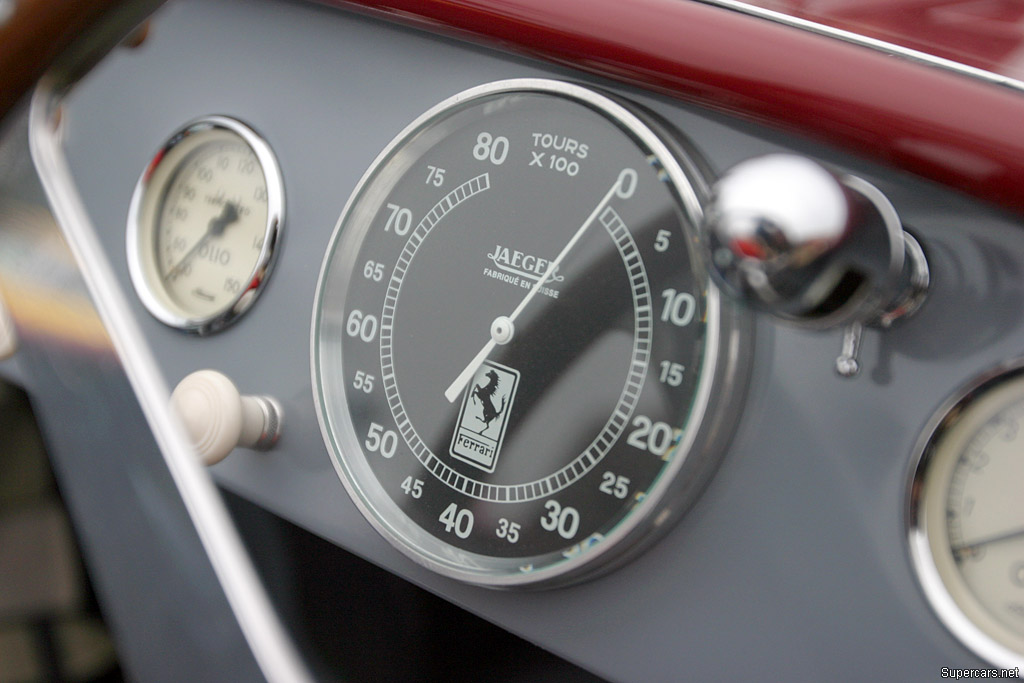1947 Ferrari 125 Sport
The Type 125 Sport or Tipo 125 S Competizione was Enzo Ferrari’s first race car and the First Ferrari to win a race outright. It followed earlier projects such as Scuderia Ferrari – a team of talent that brought Alfa Romeo to the top of Grand Prix – and Auto Avio-Construzioni (AAC), Enzo’s immediate pre-war car. Both these helped shape the 125, which itself was a testbed of good and bad ideas until the final specification was reached for the 166 Spyder Corsa.
During the wartime period, Ferrari’s factory blossomed into a 160 man workforce that made components and reduction gears for the war effort. After the it was over, Ferrari then had enough talented craftsmen and personal resources to manufacture his own cars.
Since enough time had passed since Ferrari signed his severance agreement with Alfa, the new car could finally bear his own name. It was conceived over two years from a clean sheet of paper and its design lent nothing from any other manufacturer. As a highlight, it would use a V12. Being somewhat of a rarity at the time, the V12 was inspired by Packard’s unit and would garner necessary attention from customers.
Ferrari 125 Sport Gallery
We have included a few photos of the Ferrari 125 S below but you can find more photos in the full 1947 Ferrari 125 Sport Gallery.
The first car was largely designed by Gioachino Colombo and finished by Giuseppe Busso. It went on to provide a base for all of Ferrari’s future road and racing success. Supported by a oval tubular frame from Gilco and a powered by a small displacement V12 that was ready for Voiturette racing, the very first Ferraris were only slight evolutions of the initial car which rolled out of the factory and debuted on May 11th at the Circuito di Piacenza.
This car, chassis 01C – Compeitizione or Corsa, often referred to as the Piacenza roadster – had an all-enveloping body and was driven by Franco Cortese to 6th place. It was called the 125 Sport, and was named after the 125cc unit displacement of a single cylinder. This was joined by a sister car 02C, which featured cycle fender bodywork and both were constantly updated to compete in Italian Championship events including the Rome GP, Circuito di Vercelli, Mille Miglia, Circuito di Parma, Firenze, and Circuito di Montenero at Livorno. The first victory was achieved by France Cortese at the GP or Rome and the victory was recorded on the cover of Motor in June of 1947.
In just Ferrari’s sixth race he took on the 1947 Mille Miglia with test-driver Franco Cortese and Adelmo Marchetti in race number 219. Although Ferrari went on the dominate this race in following years, the very few of the motoring press paid attention to the little Ferrari except Corrado Millanta who photographed the cars engineering up close.1
Beyond the first two Ferraris 125s, subsequent similar cars were made for the upcoming International Formula 2 regulations. The most immediate was chassis 002I, featuring a larger type 159 1908cc engine and distinctly upgraded body with detachable fenders. Raymond Sommer won the Turin Grand Prix in 002I which was Ferrari’s first major victory. The same car was later bored out 1995cc to take full advantage of the two liter limit and became the final configuration for Ferrari’s first run of production cars, the semi-grand prix 166 Spider Corsa.
The first batch of cars used a chassis designed by Gilco and had pickup points for hydraulic shock absorbers, had their rear sway bar run through the chassis and a hole for start cart. Later chassis used a revised central cross member that was used up until 1951, lever shocks and Vanwell Thinwall bearings in place of the thick units.
The current whereabouts of chassis 01C and 02C have always been a entertaining point of conjecture. It’s now largely agreed that 01C was fitted with a larger type 166 engine, an updated body and restamped as 0010I. Similarly, 02C received the same treatment. Both cars have traits of the early Gilco chassis and match up with 1946/47 drawings.
Both the fact that 0010I and 0020I have early design features are key points in the debate. This is compounded by the fact that Ferrari was very much trying to make money in these early periods, and couldn’t afford to scrap a very usable and potent chassis.
Ferrari 125 Sport Specs & Stats
| submitted by | Richard Owen |
| type | Racing Car |
| built at | Modena, Italy |
| body stylist | Giuseppe Busso |
| coachbuilder | Giuseppe Peiretti |
| engineers | Gioacchino Colombo, Angelo Nasi, Giuseppe Busso |
| production | 2 |
| predeccesor | 1940 AAC Tipo 815 |
| succeccesor | 1947 Ferrari 159 S |
| engine | V12 |
| position | Front Longitudinal |
| aspiration | Natrual |
| valvetrain | SOHC 2 Valves / Cyl |
| fuel feed | 3 Weber 30 DFC Carburetors |
| displacement | 1496 cc / 91.3 in³ |
| bore | 55 mm / 2.17 in |
| stroke | 52.5 mm / 2.07 in |
| compression | 8.0:1 |
| power | 53.7 kw / 72 bhp @ 5600 rpm |
| specific output | 48.13 bhp per litre |
| bhp/weight | 96.0 bhp per tonne |
| body / frame | Aluminum Body over Oval-Section Manganese, Chrome & Steel Alloy Tube Frame by Gilco |
| driven wheels | RWD |
| wheel type | Rudge-Type Knock Off Steel Disc |
| front tires | 6.50 x 15 |
| rear tires | 6.50 x 15 |
| front brakes | Hydraulic Drums |
| rear brakes | Hydraulic Drums |
| steering | Worm & Sector |
| f suspension | Wishbones w/Transverse Leaf Springs, Hydraulic Shock Absorbers |
| r suspension | Live Axle w/Semi-Elliptic Leaf Springs, Hydraulic Shock Absorbers, Anti-Roll Bar |
| curb weight | 750 kg / 1653 lbs |
| wheelbase | 2420 mm / 95.3 in |
| front track | 1255 mm / 49.4 in |
| rear track | 1200 mm / 47.2 in |
| length | 3450 mm / 135.8 in |
| width | 1480 mm / 58.3 in |
| height | 1100 mm / 43.3 in |
| transmission | 5-Speed Manual |
| tran clutch | Single Plate |
| gear ratios | 3.102:1, 2.224:1, 1.316:1, 1.000:1, 0.918:1 |
| final drive | 4.90:1 |
| top speed | ~170 kph / 105.6 mph |
| fuel capacity | 62.45 litres or 16.5 gal. |
| designers | Gioachino Colombo , Giuseppe Busso, Eng. Cantafora (chassis) |


